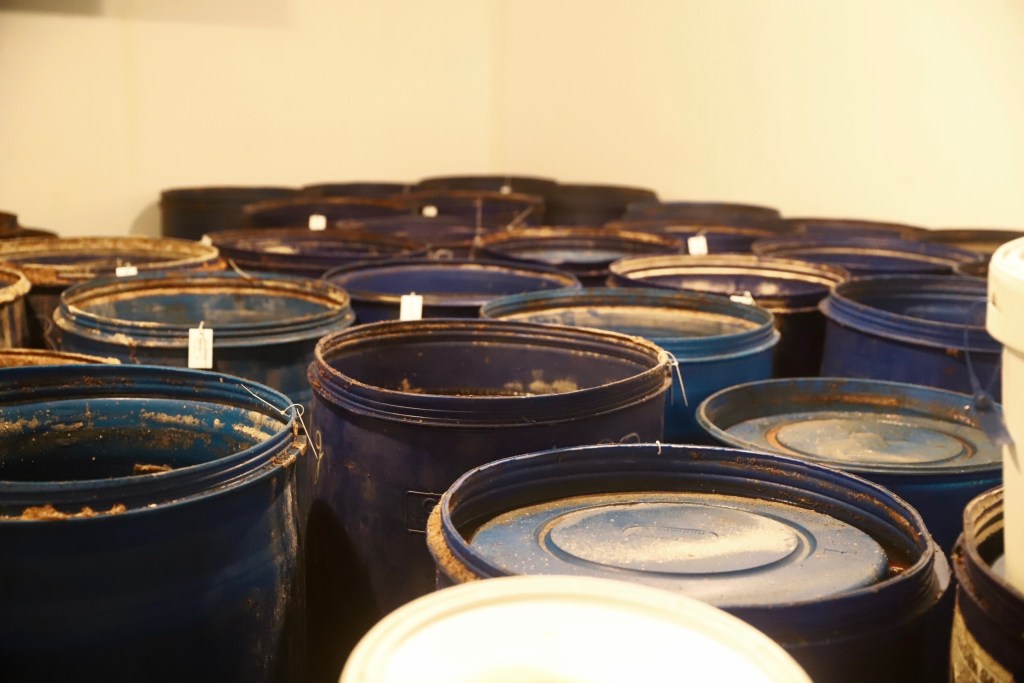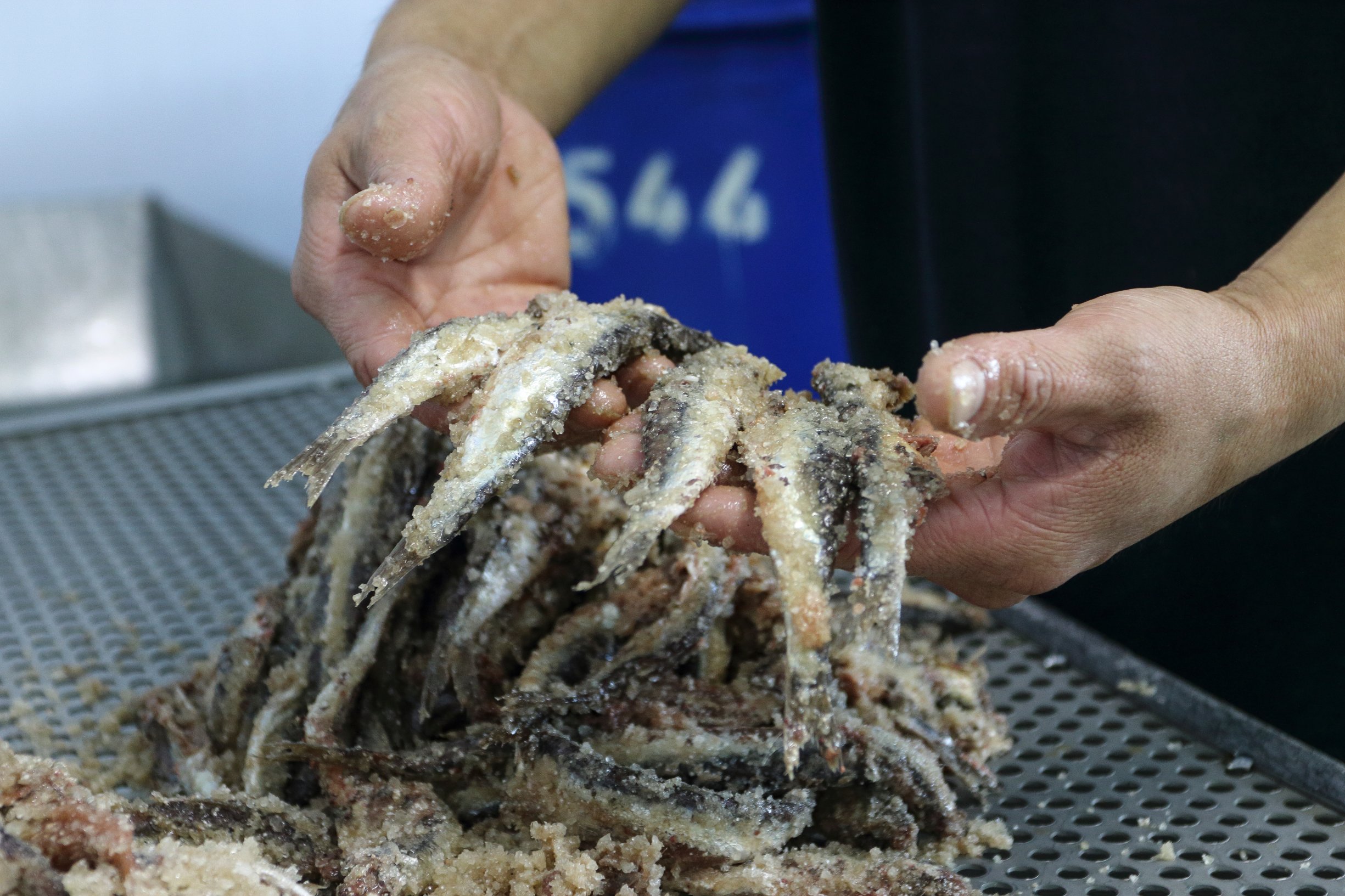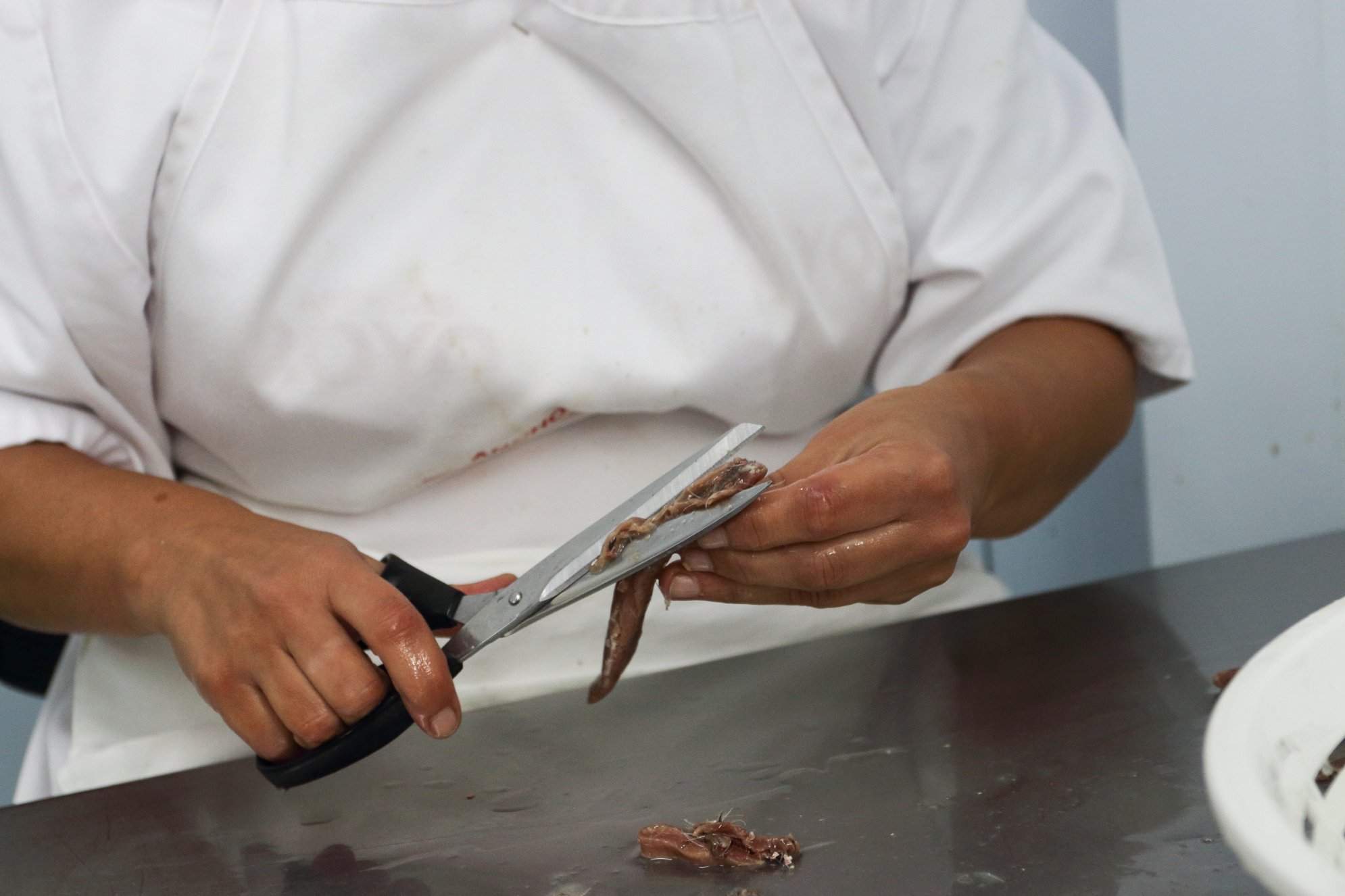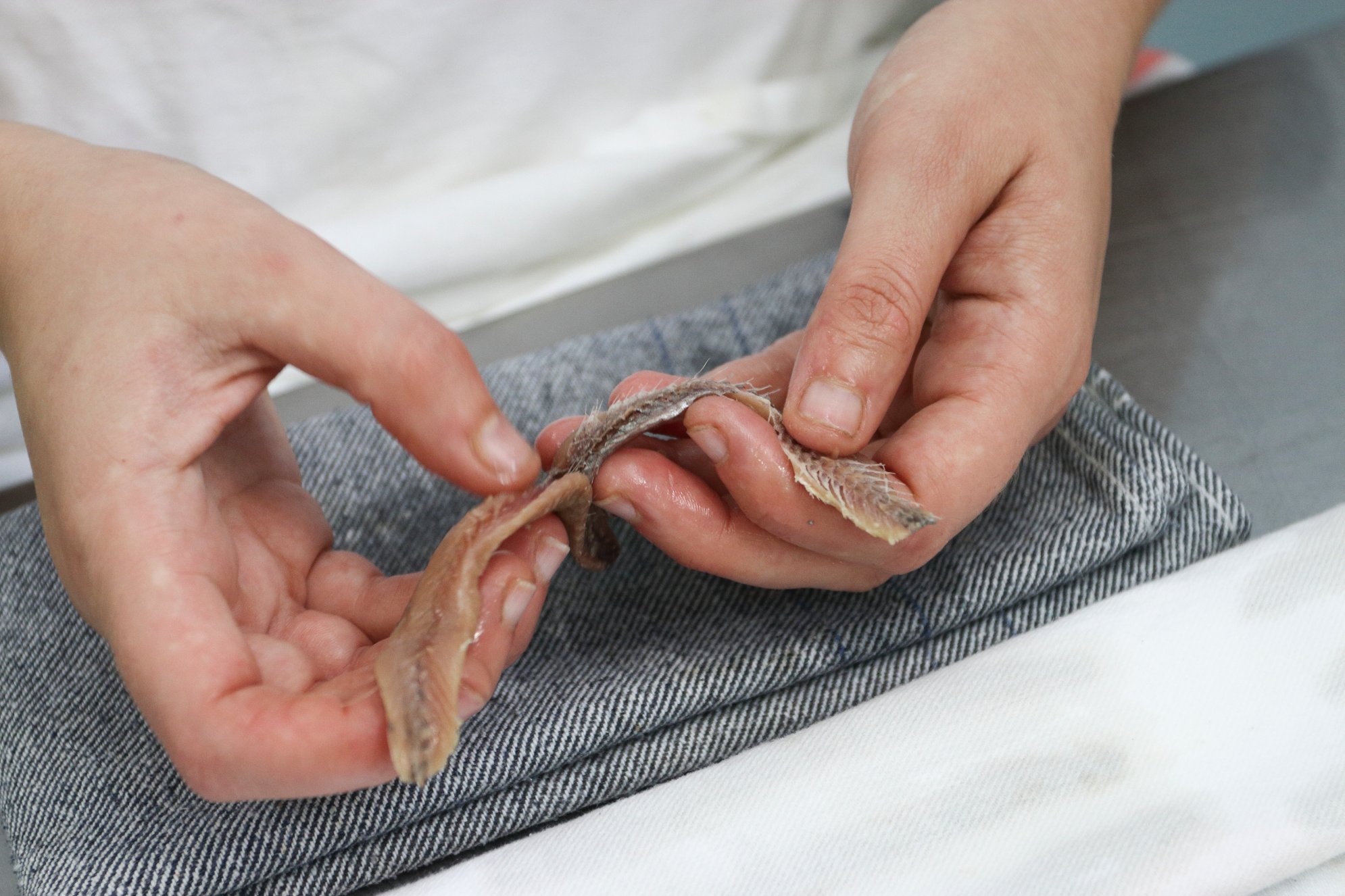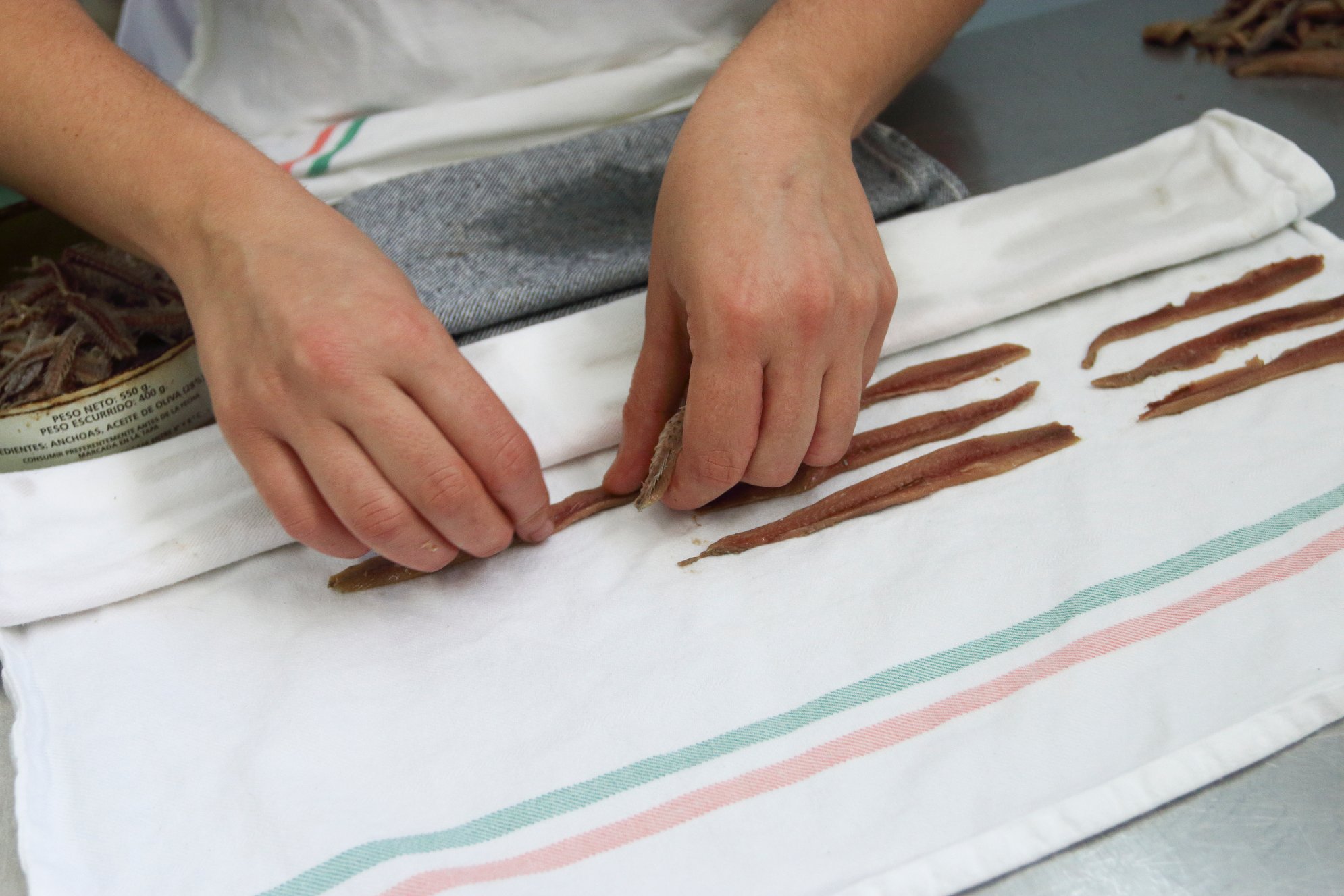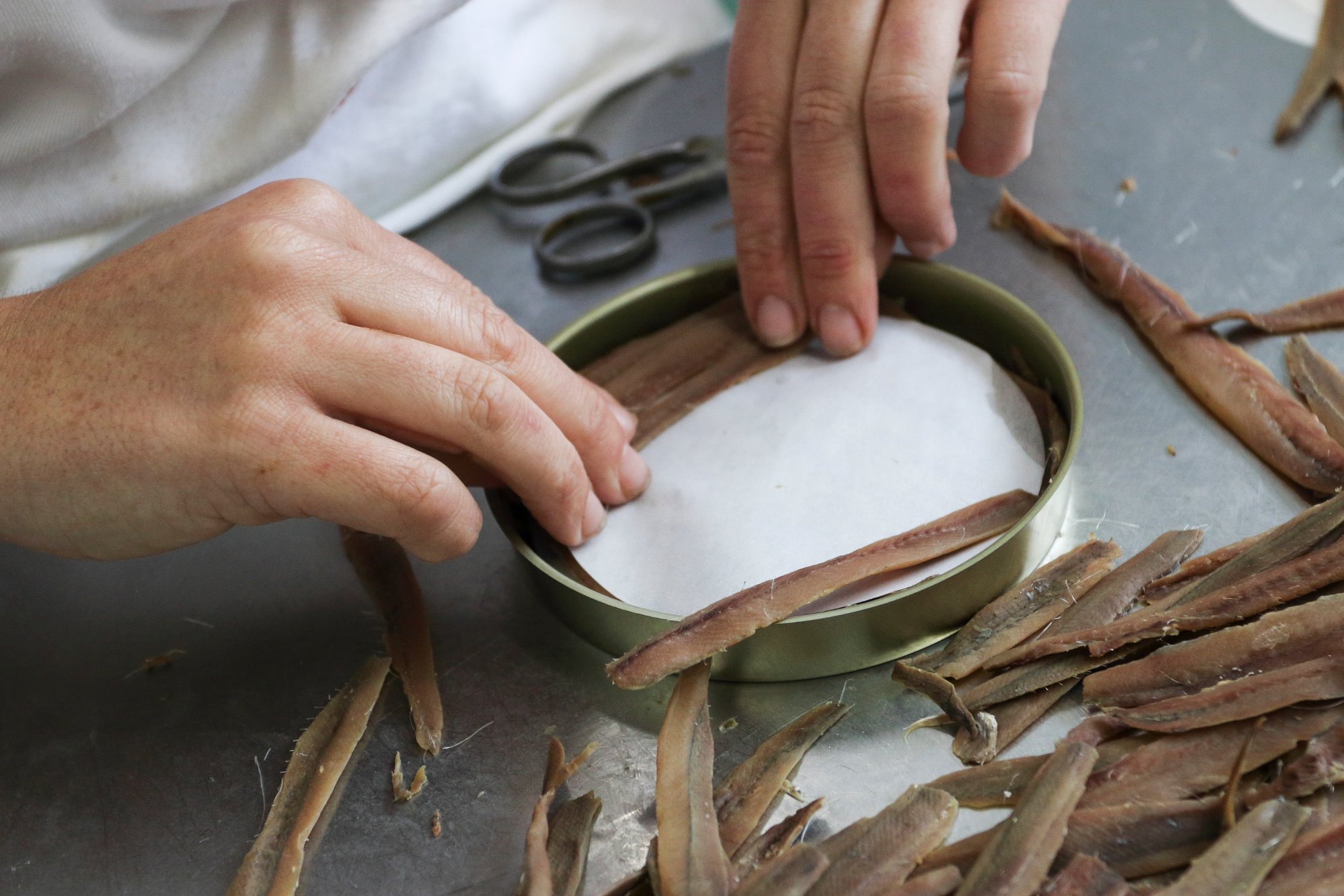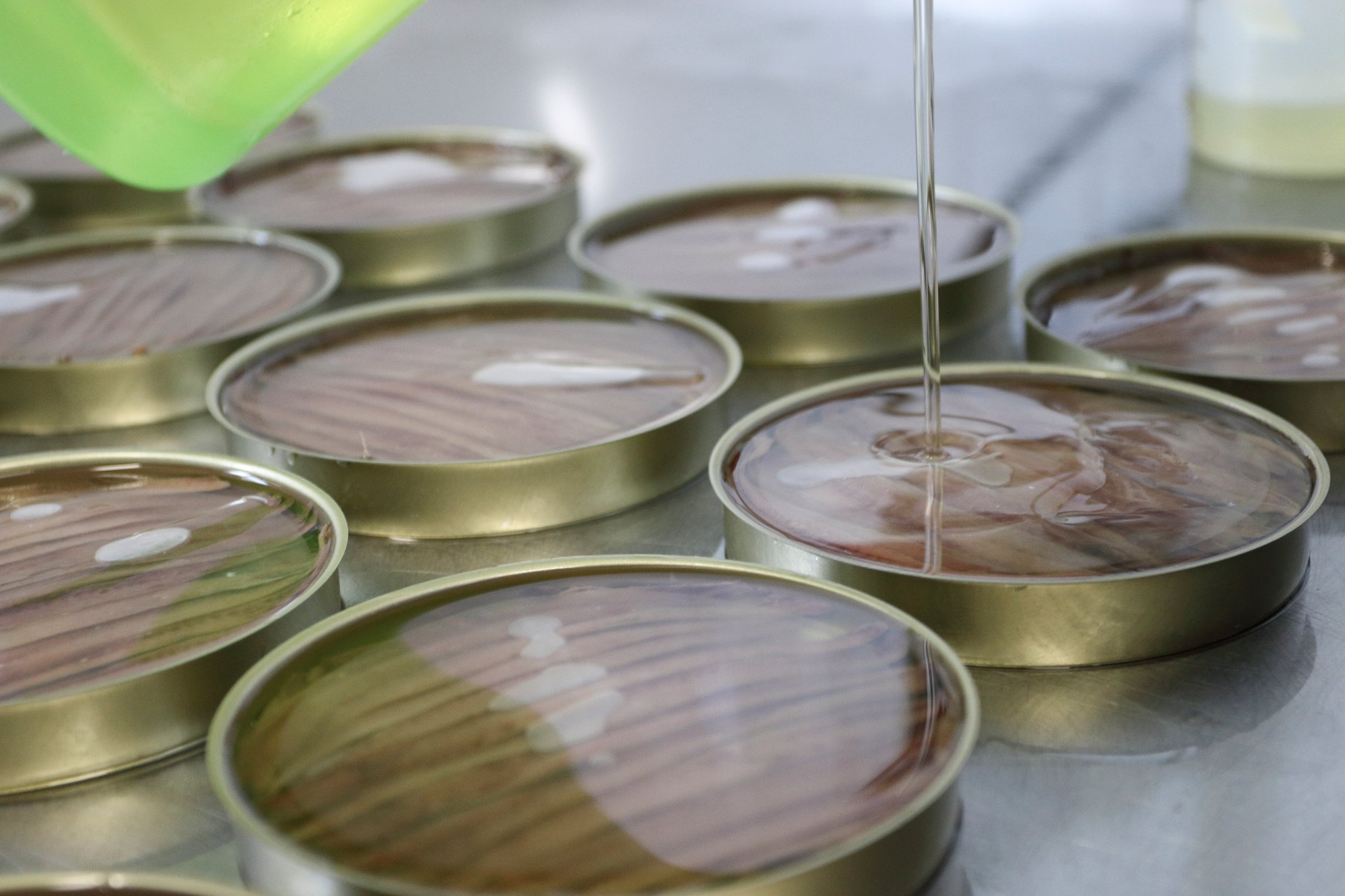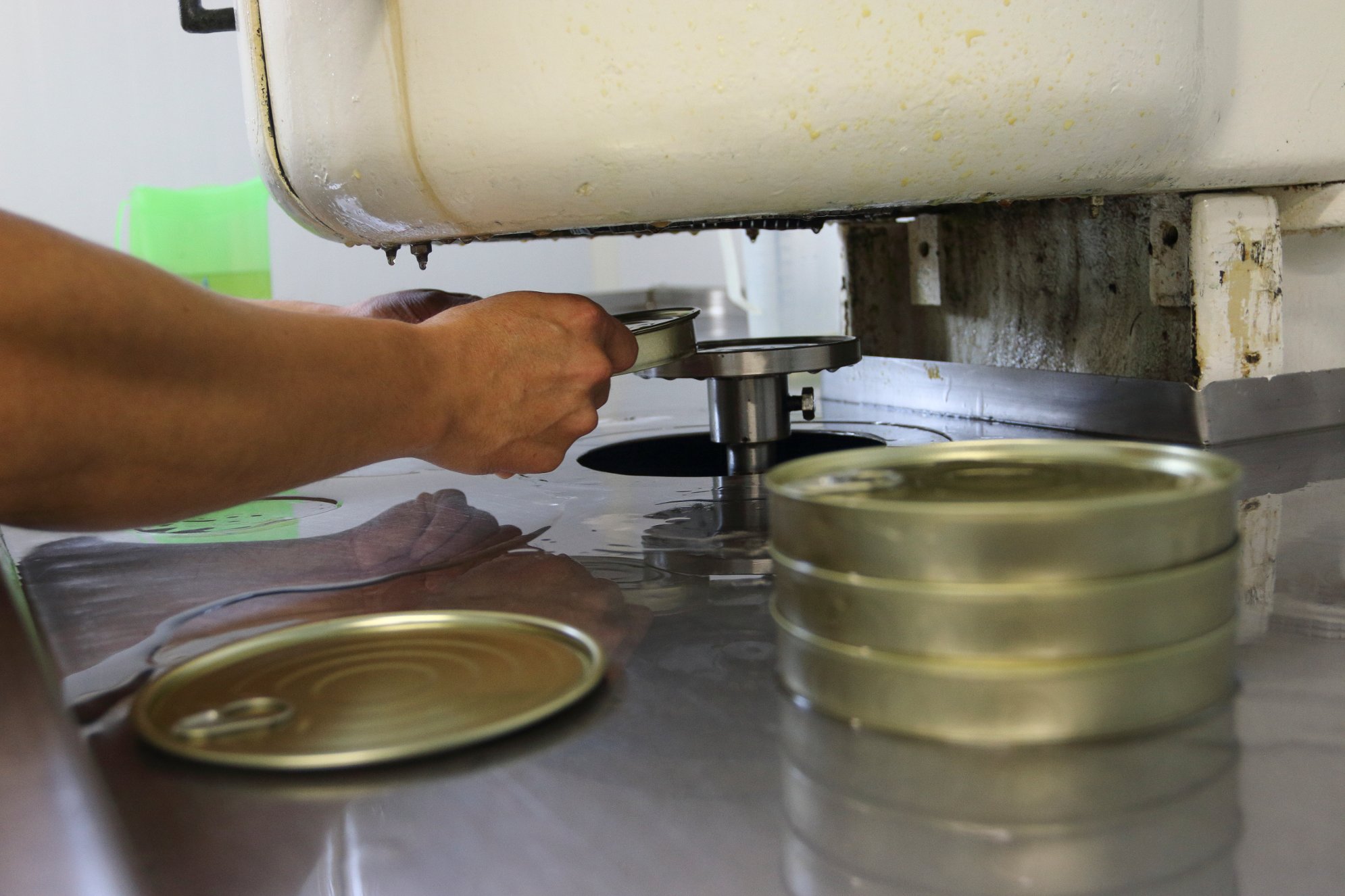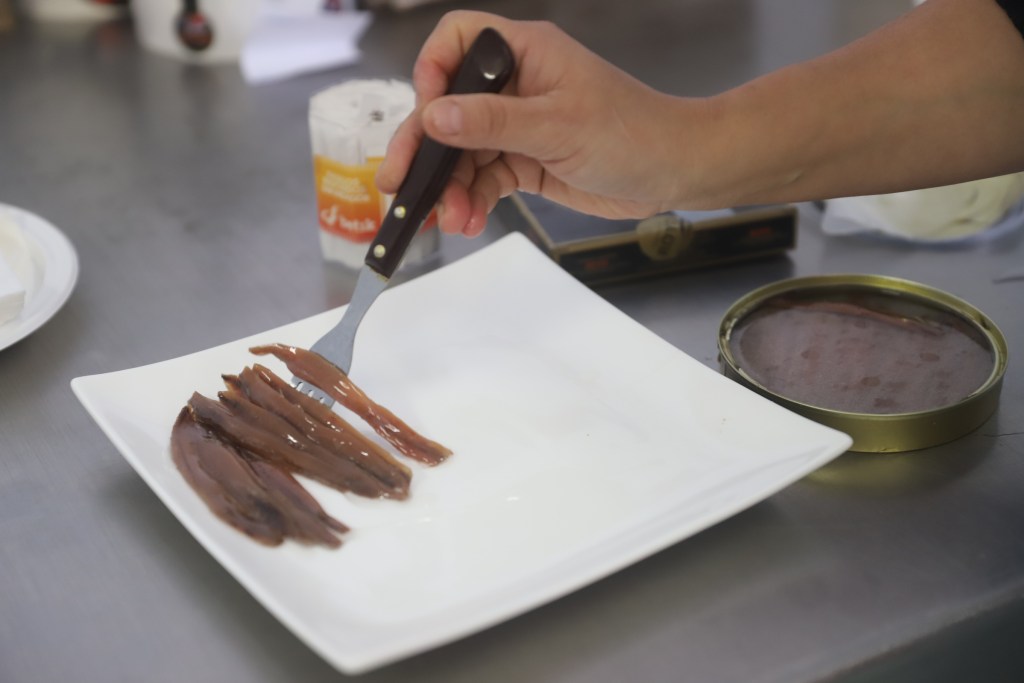Production of conserved anchovies
The anchovies arrive at our factory in just hours from when they were caught. We’re focused on larger anchovies – which suit our presentation options and clients – so it would take 28 to 32 (fresh) anchovies of the size we buy to make up a kilo.
The first step is to salt the anchovies on the tables. Here, our staff cuts off the anchovies’ heads one by one, placing them in barrels in what is called a “corona” (crown) layout. Each layer of anchovies is salted (with coarse salt or sea salt). When each barrel is full, we press it to begin the ageing process, pressing out the water and the fat over the months.
Each company has its own ageing process. In our case, we usually age them for more than 12 months at temperatures from 13-16 ºC. During this process, we keep a close on the density of the brine (known colloquially as “muera madre”) and making sure that none of the barrels is leaking any of the “muera”. If this were to happen, we’d have to change the barrel, since these anchovies are entirely free of any preservatives other than salt, brine and the perfect temperature.
When the ageing period is over, the anchovies are taken to the production room. Here, they’re removed from the barrel and cleaned one by one, firstly with fresh water, and then all extraneous materials are removed. Next, they’re opened carefully through the back and the spine is removed, leaving two fillets. Now, it’s on to the drying stage.
Once this process is over, the fillets are put into their different kinds of containers, olive oil is added and the jars and tins are sealed. This entire process is done by hand.
And most importantly, it’s important to remember that anchovies are semi-preserved. They must be stored in the refrigerator or in a cool place at temperatures not exceeding 8 ºC. We recommend consumption within six months; when opened, within 7-10 days.

